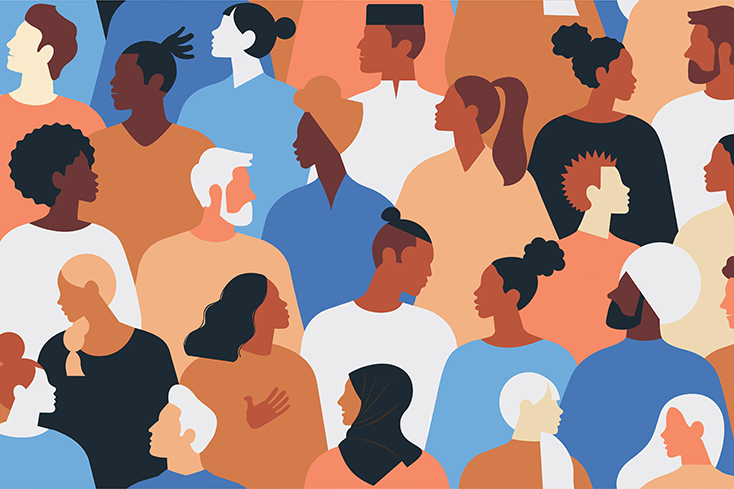September 27, 2023
By Julie Ebin, EdM
If you or someone you know is experiencing a mental health, suicide or substance use crisis or emotional distress, reach out 24/7 to the 988 Suicide and Crisis Lifeline (formerly known as the National Suicide Prevention Lifeline) by dialing or texting 988 or using chat services at 988lifeline.org to connect to a trained crisis counselor. You can also get crisis text support via the Crisis Text Line by texting NAMI to 741741.

Every community-led suicide prevention effort has its own origin story. Many were formed in the aftermath of a loved one's death or to address a community trauma. Some that already exist want to have a bigger impact. But before any group can make a difference for people in their community, they must answer a simple question: where do we start?
As a suicide prevention project director, I often talk to people who want to make a difference but do not know how to begin. I have a lot of empathy for them. Building a suicide prevention program is a complex — and likely emotional — challenge.
Loved ones often feel that increased community awareness of suicide could have saved the life of someone dear to them. Or that if there were less stigma about mental health challenges, then people would be more comfortable seeking help. For those reasons, a community’s efforts around suicide prevention will typically focus on awareness or stigma-reducing programs. However, what might be more effective is examining what kind of program the specific community might need.
The community-based suicide prevention practitioners that I speak to tell me about their need for accurate, actionable and clear information. I’m proud to announce that we finally have a new tool to give them.
An Important New Tool
Funded by the Centers for Disease Control and Prevention and developed by the Education Development Center (EDC), Community-Led Suicide Prevention (CLSP) is a new website that helps local prevention staff make informed choices about how to create and reach their suicide prevention goals. The website provides curated, evidence-informed resources, and it is the first suicide prevention website intended specifically for communities across the U.S.
CLSP gives practitioners the tools to figure out what the commonalities are between people dying by suicide in their communities, and it assists in identifying what the root causes of those suicides are.
One example is in rural Pitt County, N.C., where the local suicide prevention group recognized the need to address suicide risk in LGBTQ+ youth. In response, community health advocates formed the You Belong Here campaign, which interviewed dozens of LGBTQ+ youth to gather their perspectives on LGBTQ+ acceptance and suicide.
The interviews were incorporated into a locally developed and debuted documentary that explored how LGBTQ+ youth are perceived and what steps can be taken to reduce suicide risk factors in their community. The documentary and accompanying speakers’ panel have led to an increase in supportive spaces for LGBTQ+ youth. Some research shows that LGBTQ+ youth who lack supportive spaces have been shown to have higher rates of suicide attempts.
What We Stand to Gain with a Comprehensive Approach
CLSP is centered on seven elements for comprehensive suicide prevention inspired by The National Action Alliance for Suicide Prevention’s Transforming Communities report. The CLSP Toolkit helps community-based suicide prevention staff and volunteers build a multi-pronged approach for the long term.
Our team and advisory group — which includes training and capacity-building specialists, prevention experts and staff from community-based suicide prevention programs — developed this website with the needs of community suicide prevention efforts in mind. Specifically, the website uses plain language, features practical tools and curates the best resources for communities.
We hope that practitioners, community partners, loss survivors and others with lived experience will use this toolkit because a comprehensive approach can create programs that reduce the risks that lead to suicide. While the toolkit is new, it gathers best practices and strategies that have helped other communities move from concern to action.
For example, practitioners and community members in Dover, N.H. have been able to implement comprehensive suicide prevention and postvention initiatives — including mental health first aid and monthly suicide prevention trainings — after a strategic planning process that featured diverse voices and perspectives. This programming helped the community respond to an increase in mental health crises.
Ultimately, prevention and public health staff and people with lived experience are the lifeblood of local suicide prevention efforts. When provided with relevant information and support, they are uniquely positioned and qualified to make a difference. I hope this new resource helps them build programs that save lives in neighborhoods, towns and cities across the country.
Julie Ebin, EdM, leads projects on state- and community-level suicide prevention at Education Development Center, including their Community-Led Suicide Prevention website and the Suicide Prevention Resource Center project’s Recommendations for State Suicide Prevention Infrastructure. She is passionate about upstream prevention approaches and improving the health of historically marginalized groups.
Submit To The NAMI Blog
We’re always accepting submissions to the NAMI Blog! We feature the latest research, stories of recovery, ways to end stigma and strategies for living well with mental illness. Most importantly: We feature your voices.
LEARN MORE